Understanding ASIN on Amazon can help you increase conversion rates and get a better Buy Box Percentage. Amazon is one of the largest e-commerce platforms, with over 600 million products. To manage such a large number of products, Amazon assigns ASINs. It’s similar to a Social Security number. Knowing “What is ASIN number?” is essential for a seller to list and manage their products.
This article will explain what ASINs are, why they are essential, and how to build one in simple, easy steps. We’ll also figure out how to discover ASINs and reverse ASIN lookup.
Learn more about how Amazon barcodes like FNSKU work in conjunction with ASINs in this detailed guide.
So let’s begin our article.
Table of Contents
Part 1. What is an ASIN Number?

ASIN stands for Amazon Standard Identification Number. It’s a 10-digit serial number that Amazon uses to identify its products. It manages things well and lets buyers easily locate what they’re searching for.
On Amazon, every product that is sold has an ASIN marked. Old products of your store aren’t assigned a new ASIN. However, newly listed items get a new ASIN.
Another essential thing to mention is that an ASIN is specific to one product, not a category. Each product has a unique ASIN, even in the same category. A product with variations in size or color will have different ASINs. Multiple sellers who sell the same product will use the same ASIN.
Almost every product on Amazon is assigned an ASIN, but for books, they usually use an ISBN (International Standard Book Number) instead.
Part 2 – How to Create ASINs?
You can create a new ASIN from the Amazon Seller Central account. Check the guide below for more details.
If you’re comparing the process across different Amazon platforms, here’s a helpful breakdown of Amazon Vendor Central vs Seller Central.
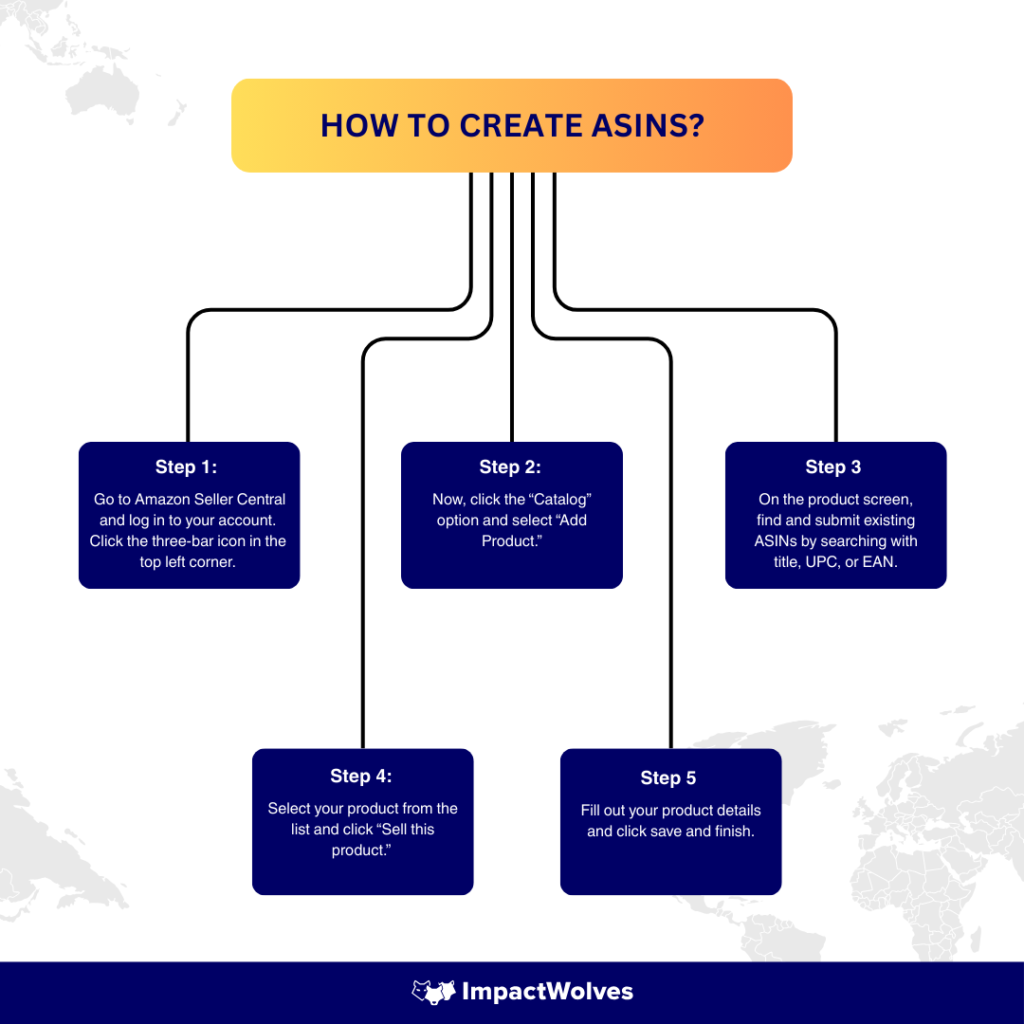
Existing-ASIN Matching and New-ASIN Generation
Here are the steps to match an existing ASIN or create a new one on Amazon Central:
Step 1: Go to Amazon Seller Central and log in to your account. Click the three-bar icon in the top left corner.
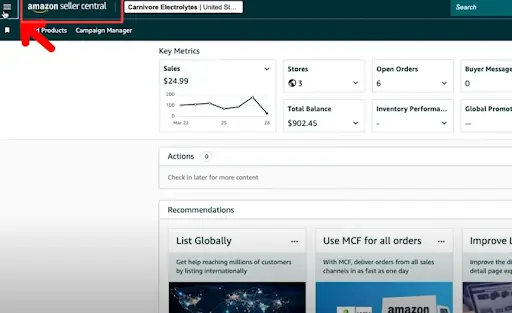
Step 2: Now, click the “Catalog” option and select “Add Product.”
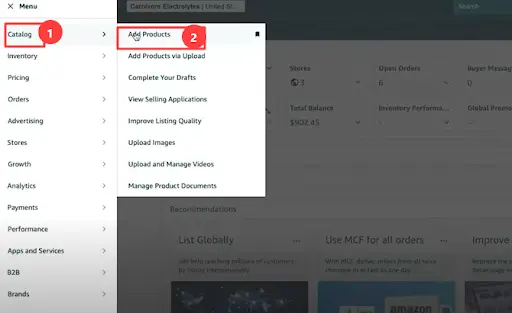
Step 3: Now, the list of your product screen will appear. To add an existing ASIN, search for the product using title, UPC, or EAN number. Then, click on the “Submit” button.
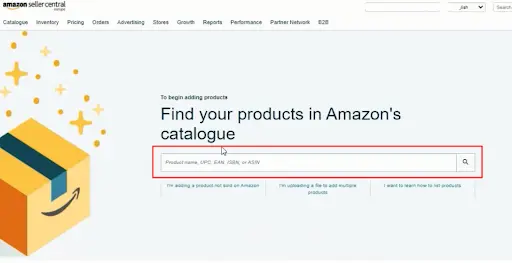
Step 4: Select your product from the list and click “Sell this product.”

Step 5: Fill out your product details and click save and finish.
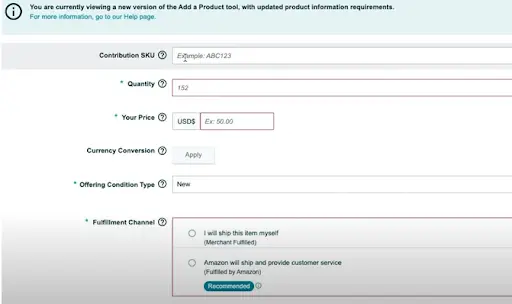
New ASIN Generation
Here are the steps to create a new one on Amazon Central.
Step 1: Open Amazon Seller Central again. Go to Catalogue > Add Products and select “I’m adding a product not sold on Amazon.”
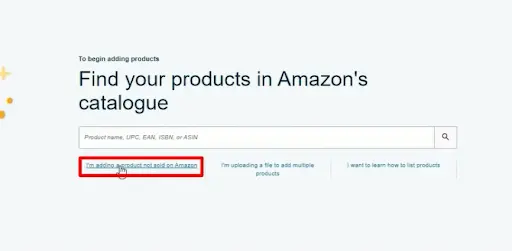
Step 2: Search for a product type and select the one that best matches your product.

Step 3: Fill out all the necessary details.

When you save & finish the details, Amazon will process your request. It takes a few days to weeks for Amazon to approve a new product.
If it’s approved, Amazon assigns a new ASIN to the product when it goes live on the website. You can find the new ASIN in the product information or the page URL.
Part 3 – Why Amazon ASINs are Important?
ASINs play a crucial role in Amazon product management. They allow for tracking products, search optimization, and improved selling efficiency for sellers and the platform.
Want to understand how Seller Central reports can help analyze ASIN performance? Read this post.
Here are the reasons why they are essential for any Amazon Seller.
- Inventory management: Sellers can monitor stock levels and handle product variations (e.g., size or color). ASINs avoid overselling of the products.
- Benefits in Terms of Sales: ASINs make it easier for the seller to get higher conversion rates and better buy box eligibility. It will thus promote account growth.
- Competitive analysis: Through reverse ASIN lookup tools, sellers can look at rival products and identify in-demand keywords. Then, they can hire a specialist to run PPC ads using these keywords.
- Brand protection and safety: ASINs assist in tracking illegal sellers and unauthorized products for brand safety.
- Customer insights: Sellers can see reviews and sales associated with their ASINs to understand customers’ preferences. It also helps to improve their product listings.
Part 4 – How to Find an ASIN?
There are many ways to find the ASIN of an Amazon product. You can find it on Amazon directly in the Product Information or the Product Webpage Link. You can also use third-party resources to find them.
For more insight into ASIN-related LPN Barcodes Amazon uses in returns and warehouse tracking, visit this blog.
Find ASINs On Amazon Directly
- Open the Product page on Amazon. Scroll down and look for “Product Information” at the end of the product page. You’ll find ASIN in this information.
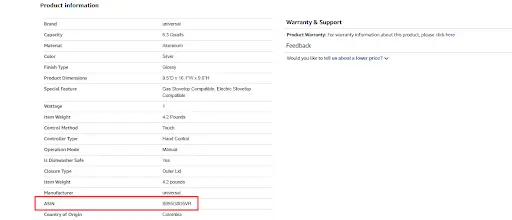
- Look at the Product page link on Amazon. The product’s ASIN is the number after “dp/.” in the product page’s URL.
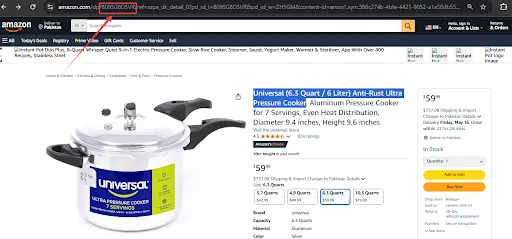
Find ASINs With Third-Party Tools
ASINTool, Synccentric, or Algopix are the tools that can assist in obtaining ASINs for a wide range of products.
If you want to search for a seller information, it’s also available in the same locations.
What is Reverse ASIN Lookup?
Reverse ASIN lookup on Amazon is a method to analyze competitors on Amazon. Tools like AMZScout or JungleScout can use ASIN to find the highest-ranking keywords for a given Amazon product. Sellers can view which keywords send sales to their competition. They can then optimize their listings for a better sales approach.
Side Note: This method is particularly beneficial for maximizing your Amazon SEO, as it identifies untapped keywords that can increase your search rankings and selling potential.
To take your product branding further after ASIN setup, explore the Amazon Brand Story feature.
Conclusion
Understanding “What is ASIN number?” and using it effectively can significantly increase your chances of success as an Amazon seller.
ASIN is a 10-digit product identification number that Amazon assigns to each and every product on Amazon. Sellers can use ASINs to track sales, optimize their listings, and analyze competitor products. You can match existing ASINs or create a new one when you sell a product on Amazon. Sellers can discover valuable keywords to analyze competitors using reverse ASIN lookup tools. It will help in optimizing their product listings for better visibility and sales.
Frequently Asked Questions
Q1. What is the difference between a Serial number and ASIN?
ASINs are Amazon-specific and utilized to categorize products in their database. However, Serial numbers or barcodes are used across various platforms and global supply chains.
Q2. What is a GTIN Number?
A Global Trade Item Number (GTIN) is a unique code that identifies a product and is recognized worldwide. It is just below the barcode on a product’s packaging or book cover. The GTIN ensures that a product is recognized and easily tracked during various supply chain stages.
To understand how product identification like GTIN fits into compliance and international tax setup, check out this Amazon VAT guide.
Q3. How are SKU and ASIN different?
ASINs and SKUs have different functions on Amazon. ASINs (Amazon Standard Identification Number) are universal and represent the product. They are used for product search and management on Amazon. However, SKUs (Stock Keeping Units) are seller-specific and represent individual offers. It’s used for the internal stock management by the product manufacturer.






One Response
This piece clearly explains what ASINs are and why they matter especially the 10 character format and how they help organize Amazon’s catalog. Nice to see guidance on finding existing ASINs versus creating new ones based on GTINs or UPCs.